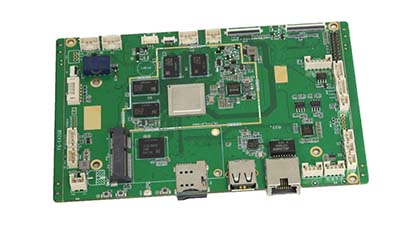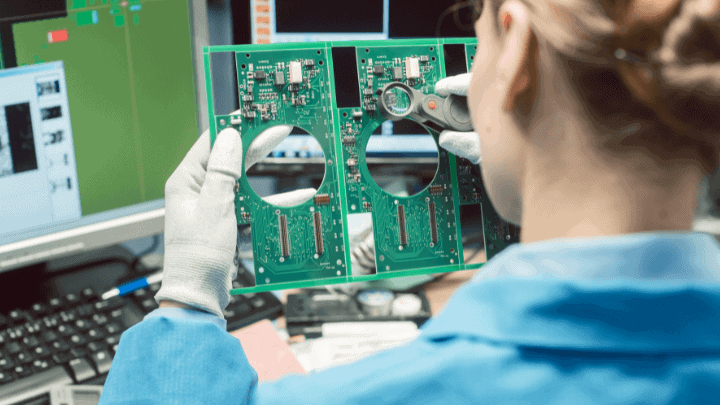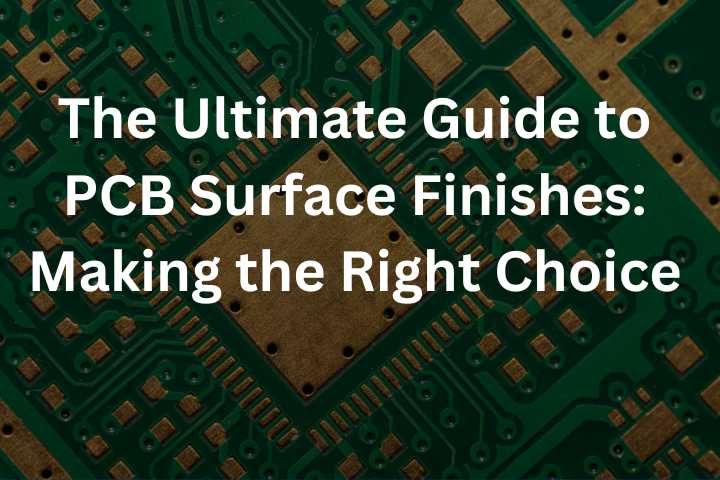Understanding PCB Prototype Assembly Tips and Trick
Introduction: Navigating the Complexities of PCB Prototype Assembly
The journey of creating a robust and reliable printed circuit board (PCB) begins long before the first components are ever placed on a board. It starts in the nuanced and complex world of PCB prototype assembly, where concepts meet reality and designs are put to the test.
The Quintessence of Prototyping in Electronics
Prototyping is not merely a step in the manufacturing process; it is the heart of innovation where designs are refined, tested, and validated. This phase is crucial for electrical engineers, product designers, and procurement professionals who are tasked with not just meeting but exceeding the demands of cutting-edge technology in various demanding industries.
Beyond Basic Board Layouts: A Comprehensive View
PCB prototyping is a multifaceted endeavor that extends far beyond the verification of board layouts. It offers a feedback-rich environment that brings potential issues to the forefront, allowing for preemptive corrections that can save significant resources down the line.
Advanced Considerations in Prototype Selection
Choosing a PCB prototype service requires delving into advanced considerations, such as material science and thermal management, which are critical yet often not the primary topics of discussion. A service provider must replicate the design and anticipate future challenges, ensuring the prototype is as close to the final product as possible.
Bridging Prototyping and Production
The transition from prototype to production should be smooth and seamless, with minimal need for redesign or modification. Therefore, the right prototyping service thinks ahead, aligning the prototype phase closely with the production realities to come.
Section 1: Fundamentals of PCB Prototype Assembly
Understanding the foundational elements of PCB prototype assembly is imperative for professionals who navigate the labyrinth of technicalities in electronic manufacturing. The prototyping phase encapsulates a broad spectrum of activities, each playing a pivotal role in the transition from concept to a tangible product that can be tested and iterated upon.
The Role of Prototyping in PCB Design
Prototyping serves as a vital checkpoint in the life cycle of PCB design. It’s a stage that allows designers and engineers to explore the practical implications of their theoretical work. By creating a physical representation of the electronic circuit, professionals can identify design flaws, test functionality, and ensure the design meets all necessary requirements before moving into mass production.
Key Factors Influencing Prototype Assembly Costs
When discussing the costs associated with PCB prototype assembly, a range of variables comes into play. An insightful article by Candor Industries highlights the fact that costs can fluctuate significantly based on factors such as design complexity and the labor involved. The nuanced cost structure is reflected in the average pricing, which typically ranges from $0.02 to $0.05 per square inch, but this can scale up to $10 to $50 per unit in certain scenarios, largely depending on the production volume and intricacy of the design.
Dissecting the Cost Variables
PCB Prototype Assembly Cost Factors
| Cost Factor | Description | Impact on Cost |
|---|---|---|
| Design Complexity | Complex circuits require more time and precision in layout and assembly. | Increases with complexity |
| Labor Costs | Varying technical skill and geographical location affect labor rates. | Varies by location |
| PCB Size and Layer Count | Larger boards with more layers require more materials and time. | Increases with size and layers |
| Assembly Process | The chosen method of assembly (THT vs. SMT) has different cost implications. | THT higher than SMT |
| Turnaround Time | Shorter turnaround times may require additional resources to meet deadlines. | Increases with speed |
| Quantity of PCBs | The number of units produced affects the cost per unit. | Decreases with quantity |
- Design Complexity: The intricacy of a PCB’s design is a prime factor in cost determination. More complex circuits require additional time and precision in both layout and assembly, which in turn impacts the overall expense.
- Labor Costs: The technical skill required to assemble PCB prototypes is not uniform; it varies widely, especially when considering the geographical location of the assembly service, which can dramatically affect labor rates.
- PCB Size and Layer Count: Size matters in PCB assembly. Larger boards with more layers demand more materials and time, both of which contribute to higher costs.
- Assembly Process Intricacies: The chosen method of assembly, be it through-hole technology (THT) or surface-mount technology (SMT), each bears its own cost implications, with SMT often being the more cost-effective option at scale.
- Turnaround Time: Expediency is frequently a necessity in the prototyping phase. However, a shorter turnaround time can necessitate additional resources to meet the deadline, thereby increasing the cost.
- Quantity of PCBs: As with most manufacturing processes, the number of units produced has a direct correlation with cost per unit. Small batches tend to be more expensive on a per-unit basis due to the efficiencies of scale being less attainable.
Understanding the factors that influence the cost of PCB prototype assembly is crucial for stakeholders to make informed decisions. It is a balance between cost, time, and quality that must be navigated with precision. As we delve deeper into each of these cost factors, remember that each choice in the prototyping process is a step towards ensuring the end product is not only functional but also economically viable within the competitive landscapes of aerospace, automotive, and telecommunications industries.
Section 3: Assessing Quality and Reliability
Within the printed circuit board (PCB) industry, particularly in the realm of prototypes, the maxim ‘quality over quantity’ holds an elevated significance. For electrical engineers, product designers, and procurement professionals, the quality and reliability of PCB prototype assemblies are not just expectations but prerequisites that dictate the success of their projects and, ultimately, their products in the market.
Understanding Quality in PCB Prototype Assembly
Quality in PCB prototype assembly is a multifaceted concept that must be understood and evaluated at each stage of the prototype’s lifecycle. It begins with the design integrity, extends through the choice of materials and components, and culminates in the thoroughness of assembly and testing procedures.
- Design Review and Verification: The foundation of a quality PCB prototype lies in meticulous design and subsequent verification. A comprehensive review process identifies potential issues before production, preventing costly reworks and ensuring the design’s integrity is maintained.
- Material and Component Selection: The PCB materials and components form the physical core of the PCB prototype. Their quality directly affects the overall performance and longevity of the board. A reliable prototype service must provide access to premium materials and components that meet industry standards.
- Manufacturing Precision: The actual assembly of the PCB prototype must be precise. This includes accurate soldering, component placement, and adherence to the design specifications. Advanced manufacturing techniques and equipment are essential to achieve the desired level of precision.
Reliability as a Measurable Parameter
Reliability in PCB prototypes can be quantified and measured against set standards to ensure that the final product will perform under expected conditions over time.
- Testing Rigor: Reliability testing is an exhaustive process that should simulate the operating environment of the final product. This might include thermal cycling, vibration testing, and electrical testing to uncover any latent defects.
- Consistency Across Batches: Quality is not a one-off event but a consistent output across various production runs. Reliable PCB prototype services must demonstrate an ability to consistently produce prototypes that meet the same quality standards batch after batch.
- Certifications and Standards Compliance: Adherence to international and industry-specific standards, such as ISO 9001, IPC-A-600, or IPC-A-610, is a tangible indicator of a commitment to reliability. These certifications provide a benchmark for quality assurance in the PCB assembly process.
Beyond Specifications: The User Experience
While technical specifications and testing provide measurable data on quality and reliability, the user experience offers a more subjective yet equally crucial perspective.
- Ease of Integration: A quality PCB prototype should seamlessly integrate into the larger system it’s designed for without requiring modifications or causing unforeseen complications.
- Support and Communication: The level of technical support and open communication provided by the prototype service also plays a significant role in the perceived quality and reliability of the product. Responsive service providers who offer insightful support tend to deliver more reliable prototypes.
Assessing quality and reliability in PCB prototype assembly demands a comprehensive approach that scrutinizes every detail. For the discerning professional, it’s about ensuring that the prototype isn’t merely a physical rendition of a design but a dependable representation of the final product’s potential. As we advance into the next section, the focus will shift towards cost-efficiency without compromising these critical elements of quality and reliability.
Quality and Reliability Assessment Factors in PCB Prototypes
| Assessment Area | Key Considerations |
|---|---|
| Design Review and Verification | Identify potential issues, ensure design integrity. |
| Material and Component Selection | Use of high-quality materials that meet industry standards. |
| Manufacturing Precision | Precision in soldering and component placement; adherence to specifications. |
| Testing Rigor | Comprehensive testing to simulate operational conditions and uncover defects. |
| Consistency Across Batches | Ability to maintain quality over multiple production runs. |
| Certifications and Standards Compliance | Adherence to ISO, IPC standards as an indicator of reliability. |
| Ease of Integration | Prototypes should integrate smoothly into the larger system. |
| Support and Communication | Quality of technical support and effectiveness of communication with the service provider. |
Section 4: The Importance of Scalability and Future Proofing
In the dynamic landscape of electronic manufacturing, scalability and future-proofing are the linchpins for not just surviving but thriving in a competitive market. For stakeholders in the PCB domain, such as electrical engineers, product designers, and procurement professionals, the foresight to envision and prepare for future demands is as crucial as the expertise to manage current projects.
Embracing Scalability in PCB Prototype Assembly
The concept of scalability in PCB prototype assembly encompasses more than the mere ability to ramp up production quantities. It is an ethos that imbues every facet of the production cycle with the potential for growth and evolution.
- Modular Design Philosophy: Scalability starts at the design stage. A modular approach allows for components and subsystems to be easily upgraded or replaced, thus extending the life cycle of the PCB and catering to future technological advancements.
- Selection of Future-Ready Components: Choosing components that not only satisfy the requirements of the present but are also likely to remain relevant in the foreseeable future is a judicious strategy. This approach reduces the risk of obsolescence and ensures the prototype remains a viable foundation for subsequent iterations.
- Versatile Manufacturing Processes: A PCB prototype assembly process that is both robust and adaptable ensures that transitioning from prototype to full-scale production is a seamless affair. It also guarantees that the process can accommodate emerging technologies and techniques.
Future Proofing: Anticipating the Unforeseen
Future-proofing is the strategic anticipation of future trends and technologies, not just to withstand the test of time but to set a benchmark for innovation.
Incorporating Advanced Technologies:
Staying abreast of cutting-edge technologies like HDI (High Density Interconnect) or flexible PCBs and integrating them into prototype assemblies can pave the way for future development, preventing the prototype from becoming dated prematurely.
Sustainability Considerations:
As environmental regulations become stricter and consumer preferences shift towards eco-friendly products, sustainable design and manufacturing practices in PCB assembly are not optional. They ensure compliance and market relevance in the years to come
Investing in R&D:
A continuous investment in research and development is imperative to leapfrog from current technologies to future innovations. It fosters an environment where learning and adaptation are constant, positioning the PCB prototype not as the end of a journey but as a stepping stone to further discovery.
Section 5: Cost Considerations Without Compromising Quality
In the realm of PCB prototype assembly, the delicate balance between cost-efficiency and uncompromised quality is a topic of paramount importance, especially for electrical engineers and procurement professionals. The challenge lies not in cost-cutting but in cost-optimization, ensuring that every dollar spent contributes to the value and integrity of the final product.
Aligning Cost with Quality Outcomes
Cost considerations should align with the expected quality outcomes. Skimping on essential aspects can be counterproductive, leading to increased costs down the line due to failures or necessary reworks.
- Economies of Scale: Engaging in discussions about volume discounts and long-term supply agreements can reduce costs significantly, provided these conversations do not lead to quality compromises.
- Design for Manufacturability (DFM): By integrating DFM principles, engineers can create PCB designs that not only perform well but also are optimized for cost-effective manufacturing, reducing waste and lowering production costs.
Leveraging Technological Advancements
Technology has a two-fold impact on cost optimization—it can reduce the need for expensive manual labor and improve the precision and quality of the PCB prototypes.
- Automation and AI: Implementing automated processes and artificial intelligence in PCB assembly not only speeds up production but also reduces the likelihood of human error, thus enhancing quality and reducing costs associated with rework.
- Advanced Testing Techniques: Utilizing state-of-the-art testing methods can identify potential issues early in the manufacturing process, preventing costly failures in the field and ensuring that the investment in quality testing translates to reliability in the product’s performance.
Strategic Sourcing and Partnerships
The choice of materials and components significantly impacts both cost and quality, and building strategic partnerships can be beneficial.
- Material Selection: Opting for materials that offer a balance between performance and cost can provide long-term savings. Advanced composites or alloys may offer better performance or longevity, which can justify their higher upfront costs by reducing the total cost of ownership.
- Supplier Relationships: Establishing strong relationships with suppliers can lead to better pricing, higher quality materials, and more favorable payment terms, which in turn contribute to cost-efficiency without sacrificing the quality of the PCB prototypes.
Smart Project Management
Effective project management practices are instrumental in controlling costs while maintaining high quality.
- Phased Development: Adopting a phased approach to PCB prototype development can help in managing costs better, allowing for adjustments based on iterative feedback without extensive financial commitments at the outset.
- Risk Management: Identifying and managing potential risks early can prevent costly mistakes. A robust risk management strategy ensures that potential quality issues are addressed before they escalate into expensive problems.
By approaching cost considerations with a strategic mindset focused on value, efficiency, and quality, companies can deliver superior PCB prototypes that meet the stringent demands of the electronics industry without unwarranted financial burdens. This balanced perspective is crucial for professionals who are tasked with procuring high-quality PCBs that will serve as reliable components in sophisticated electronic systems.
Conclusion: Synthesizing Tips and Tricks for Smart Prototype Selection
In wrapping up our exploration of PCB prototype assembly, the convergence of technical prowess, strategic foresight, and cost-awareness are the bedrocks of informed decision-making. For the electrical engineers, product designers, and procurement professionals engaged in the minutiae of electronic component assembly, the insights gathered here are not merely theoretical but eminently applicable.
As you stand at the crossroads of innovation and pragmatism, remember that the right PCB prototype service is one that aligns with your technical requirements, quality standards, scalability needs, and budget constraints without compromising on the future viability of your product. It’s about finding a partner that understands the intricacies of your industry and the specific challenges you face.
To ensure your projects benefit from the highest standards of PCB prototype assembly, it is crucial to collaborate with a manufacturer that provides not just services but solutions. Finest Printed Circuit Board Ltd stands as a beacon in this regard, with two decades of industry experience and a commitment to excellence that mirrors your own aspirations.
If you’re seeking a partnership that will honor the integrity of your designs and propel you toward market success, we invite you to send an inquiry to Finest Printed Circuit Board Ltd. Allow us to be the catalyst for your innovations, offering the one-stop PCB and PCBA services that will elevate your prototypes from concept to reality.





